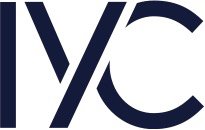Title Page
-
Conducted on
-
Prepared by
-
Location
-
Audit Team
2. Designated Person ( ref:‐ PMSC 2.1 2.8 3.13.9 GTGP 2.1(e)2.2.25 – 2.2.30 )
-
2.1 Who has been appointed DP and when was the appointment?
-
2.2 Is the DP role outside of any management function within the harbour authority?
-
2.3 Does the DP provide 'independent' assurance about the operation of the Port's Marine Safety Management System? How is this undertaken?
-
2.4 Does the DP have direct access to the highest level of authority (Duty Holder)?
-
2.5 When did the DP last audit compliance with the Code:
-
2.6 Was the audit report formally presented to the Governing body at the first opportunity?
-
2.6.1 Can the minutes be provided and dates that the report was presented to the board
-
2.7 What Port management group meetings does the DP attend?
-
2.8 How closely do the competencies of the DP match the competencies recommended by the GTGP
3. Duty holders (Sections refers PMSC 2.1,2.3 – 2.7, 2.14 – 2.15, 3.1, 3.17, 3.19, 3.22 – 3.23 GTGP Sect. 2 )
-
3.1 Are the Duty Holders clearly identified and published?
-
3.2 Is it stated that they are collectively and individually responsible?
-
3.3 And that they cannot assign or delegate their accountability for compliance with the Code on the grounds they do not have particular skills
-
3.4 Are there clear lines of communication from the ports professional staff to the governing body and vice versa?
-
3.5 Are the roles and functions of staff clear and formal?
-
3.6 Has the governing body published their commitment to the Code?
-
3.7 Publically reported their performance against the PMSC on an annual basis?
-
3.8 Published plans and any assessments against their performance in meeting the obligations against the Code at least once every 3 years? If so, when:
-
3.9 Is PMSC a standing agenda item on Executive Management meetings?
-
3.10 Is there a standing safety committee meeting? Provide the minutes of the last 2 safety committee meetings
4. Duties and powers (ref PMSC 3.3 – 3.4 4.9 4.11 5.3 – 5.5 GTGP Sect 1&7 )
-
4.1 Is the legislation, including all local legislation, available and up to date?
-
4.2 When was the legislation last reviewed:
-
4.3 Does the Harbour Authority have the ability to make General Directions?
-
4.4 If so, have General Directions been formally given to regulate marine operations?
-
4.5 Has the Harbour Authority made Byelaws?
-
4.6 If so, when were they last updated:
-
4.7 Has a statement been included in the Harbour Authority's plan about their legal duties & powers?
-
4.8 Is the jurisdiction of the Harbour Authority clearly defined and known?
5. Consultation & information dissemination ( ref PMSC 3.12– 3.13 3.19 and GTGP Sect. 3)
-
5.1 How does the Harbour Authority formally consult with its employees?
-
5.2 How does the Harbour Authority consult with contractors or related service providers?
-
5.3 How does the Harbour Authority consult with its stakeholders?
-
5.4 How is information publicly disseminated by the Harbour Authority?
-
5.5 Is the current list of local Notices or Information Notes up to date and how are they published?
6. Risk assessment ( ref PMSC 3.5 – 3.6 3.15 4.2 GTGP 4.2 )
-
6.1 Have all routine and non‐routine risks associated with marine operations been formally assessed?
-
6.2 Have the environmental consequences to the Safety Management System and consequent risk control measures been assessed and implemented?
-
6.3 Have past events and accidents/MAIB reports been analysed in preparing the risk assessments?
-
6.4 Have the risk assessments been completed by competent people?
-
6.5 Do the risk assessments clearly identify those risks that are not ALARP (as low as reasonably practicable)?
-
6.6 Are the risk assessments continuously re‐assessed with new hazards and changed risks, properly identified?
-
6.7 Have the 4 standard criteria for identified outcomes been assessed i.e. life, environment, business (reputation) and damage (port and shipping)?
-
6.8 When were the risk assessments last reviewed?:
-
6.9 How does the Port help employees understand the standing risks they will encounter from the risk assessments? How does the port help them dynamically assess each situation on the day?
7. Safety Management System ( ref:‐PMSC Intro. 3.1,3.8 – 3.11, 3.14 – 3.15,3.1 7,3.19, 4.3, 4.6 GTGP 4.3 )
-
7.1 Has the port developed a Safety Management System that:
-
7.1.1 Defines the Safety policy(s)?
-
7.1.2 States the procedures to implement those policy(s)?
-
7.1.3 Produces instructions and checklist to comply with the procedures?
-
7.1.4 Generates accident and incident reports?
-
7.1.5 Defines the organisation and personnel roles?
-
7.1.6 Sets standards and levels of qualifications for various employees and contractors?
-
7.1.7 Develops performance measuring methods?
-
7.1.8 Generates plans and assessments against the ports performance (3 yearly)?
-
7.2 Does the Safety Management System:
-
7.2.1 Deal with preparedness for emergencies?
-
7.2.2 Establish a formal procedure for notification of various publications (MAIB reports etc.)?
-
7.2.3 Require the provision of aids to navigation to be based on formal risk assessment?
-
7.2.4 Provide for works in the harbour, especially dredging operations, liable to interfere with navigation?
-
7.2.5 Identify safe pilot boarding and disembarkation areas and incorporate the latest statutory requirements and Codes of Practice?
8. Powers and enforcement ( ref :‐PMSC 3.3 – 3.4 3.18 4.9 4.11 – 4.13 5.3 – 5.6 GTGP )
-
8.1 Has the Harbour Authority kept under review their powers and the extent of their jurisdiction?
-
8.2 Are available powers to direct vessels used to ensure the safety of navigation?
-
8.3 Is there a policy on enforcement and prosecution?
-
8.4 When was the policy last practised:
-
8.5 Has the Harbour Authority ever prosecuted an offender?
-
8.6 Are the Harbour Masters powers determined in Byelaws or Directions
9. PILOTAGE POLICY
-
9.1 Does the Harbour Authority provide a pilotage service?
-
9.2 Has the Harbour Authority risk assessed whether and what pilotage service they must provide?
-
9.3 Has the Harbour Authority risk assessed to determine whether pilotage should be compulsory?
-
9.4 If pilotage is compulsory have pilotage directions been issued?
-
9.5 Does the Safety Management System address?
-
9.5.1 The duty to keep the need for pilotage under review?
-
9.5.2 The authorisation of pilots?
-
9.5.3 The arrangement under which its Authorised pilots are engaged?
-
9.5.4 The approval of pilot launches?
-
9.5.5 The issue of pilotage directions?
-
9.5.6 The issue of exemption certificates?
-
9.6 Is there a system in place to ensure pilots are properly rested before duty?
-
9.7 Is proper time allocated for the development of the Pilotage Passage plan?
-
9.8 Has a formal risk assessment been used to identify when more than one pilot would be needed?
-
9.9 Do pilot boats meet statutory requirements and appropriate Codes?
-
9.10 Does the Harbour Authority have formal procedures for assessing applicants for pilot exemption certificates and issue of subsequent certificates and revalidations?
-
9.11 Does the Harbour Authority have formal written agreements with Pilot Exemption Certificate holders and their employers to regulate the use of certificates?
-
9.12 Does the Harbour Authority have formal procedures for suspension and revocation of a pilot’s authority?
-
9.13 Does the Harbour Authority ensure pilots and PEC holders are appropriately trained and that their authorisations are re‐validated every 5 years?
-
9.14 Does the Harbour Authority formally require the use of passage plans (e.g. in the pilotage directions)?
-
9.15 Do they publish up to date guidance or general passage plans adopted by the port?
10. Tugs, workboats and marine services (ref PMSC 5.24 – 5.25 GTGP Sect. 9 )
-
10.1 Does the Safety Management System cover the use of harbour craft including tugs and the provision of moorings?
-
10.2 Have the risks associated with the use of harbour craft including tugs been formally assessed?
-
10.3 Has the Harbour Authority developed towage guidelines including operations in restricted visibility?
-
10.4 Have the towage guidelines been reflected in directions?
-
10.5 Has the Harbour Authority ensured that harbour craft including tugs are fit for purpose and that the crew are appropriately trained and qualified?
-
10.6 Do all small commercial craft operated by the Harbour Authority possess a valid Small Commercial Vessel Certificate?
-
10.7 What qualifications do the Coxswains have, are they appropriate and in date?
11. Conservancy obligations ( ref:‐ PMSC 4.3 – 4.4 5.26 – 5.29 GTGP Sect. 6)
-
11.1 Are properly maintained aids to navigation provided?
-
11.2 Are aids to navigation subject to periodic review by relevant General Lighthouse Authority (GLA)?
-
11.3 If so, when was the last audit completed by the GLA:
-
11.4 Were the findings of that audit satisfactory?
-
11.5 Have any changes to navigation aids been advised to the GLA and properly recorded?
-
11.6 Are hydrographic surveys completed, in accordance with any risk assessments?
-
11.7 If so, when was the last:
-
11.8 Are the results of the surveys assessed and actioned as appropriate?
-
11.9 Are the results published and disseminated to stakeholders?
-
11.10 Is the Hydrographic Code of Practice
12. Directions ref:‐(PMSC 5.2 – 5.5 GTGP Sect. 1 & 8)
-
12.1 Does the Harbour Authority have a procedure of how General Directions should be given?
-
12.2 Does the Harbour Authority have a procedure of how a Special Direction should be given?
-
12.3 Has the Harbour Authority identified who and how Directions can be given?
13. Training PMSC 2.10 2.14(c) 3.13 GTGP Sect. 11
-
13.1 Does the Harbour Authority have a stated training policy?
-
13.2 Is there a training programme?
-
13.3 Are training records maintained?
-
13.4 Do persons appointed to positions with responsibility for the safety of marine operations possess appropriate competencies?
14. Vessel Traffic Services (VTS) Ref (PMSC 5.15 GTGP Sect. 7)
-
14.1 Has the need for VTS been identified by risk assessment?
-
14.2 If the Harbour Authority provides VTS, what types of service are offered and are these appropriate to the risk?
-
14.3 If VTS is considered excessive or inappropriate by the Harbour Authority is a Local Port Services (LPS) provided?
-
14.4 Was the effectiveness of the equipment, manning and procedures evaluated?
-
14.6 Have all VTS or Port Information personnel been appropriately trained?
-
14.7 Are the log books for VTS personnel being kept up to date?
-
14.8 Is there a process to ensure that VTS staff are in date for “refresher training”?
-
14.9 Is MSN 1796 and ALRS up to date. Are the sailing directions accurate?
-
14.10 Are VTS On‐the‐Job‐Training‐Instructors appointed and qualified to the appropriate standard.
15. Published documents ref (PMSC 3.19 4.3 (d & e) GTGP Sect. 2)
-
15.1Has the Harbour Authority published:
-
15.1.1 Its Safety Management System?
-
15.1.2 A clear commitment to comply with the Code?
-
15.1.3 A Safety plan for Marine Operations?
-
15.1.4 An assessment of performance against the Safety plan?
-
15.1.5 A safety policy for marine operations?
-
15.1.6 Appropriate hydrographical information including warnings on new hazards?
16. Final Check
-
16.1 Is the Harbour Authority aware of their existing powers and duties?
-
16.2 Appoint someone as an ‘independent 'designated person' with direct access to the board?
-
16.3 Develop an effective marine safety management system, which employs formal risk assessment techniques?
-
16.4 Employ people who are competent and qualified for the positions they hold?
-
16.5 Publish a comprehensive safety plan, along with regular assessment showing the authorities performance measured against the code
Sign off.
-
Name of auditor.
-
Signed.
-
Name of auditor.
-
Signed.













